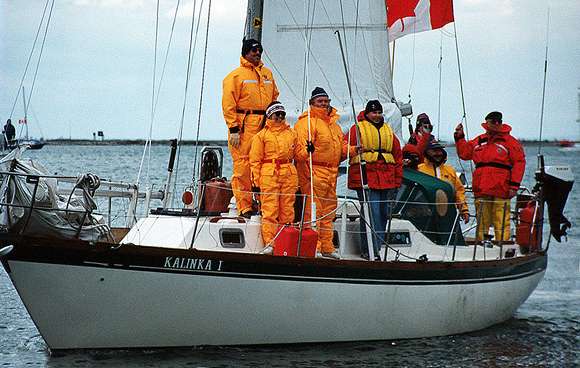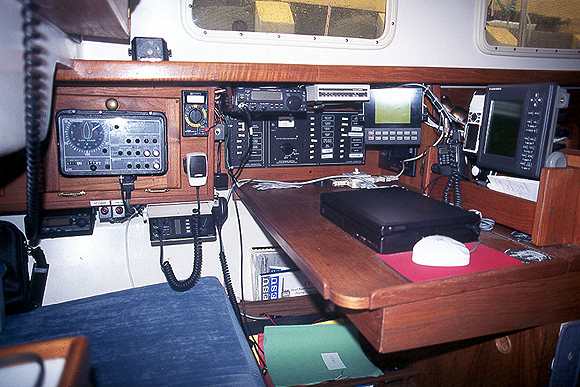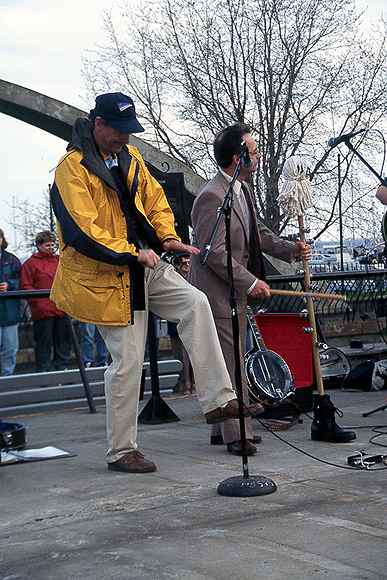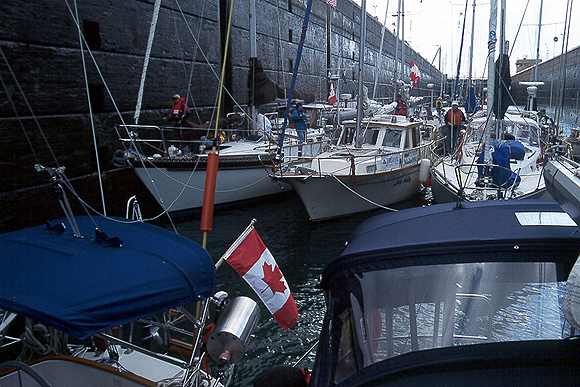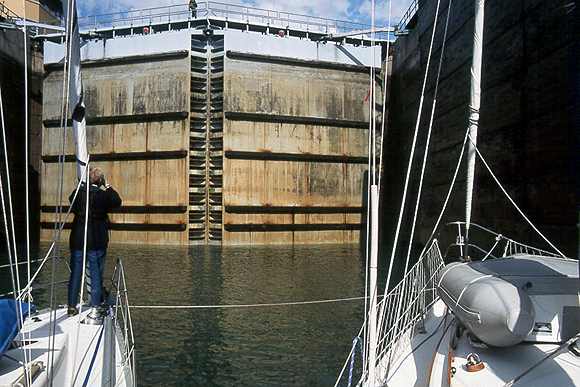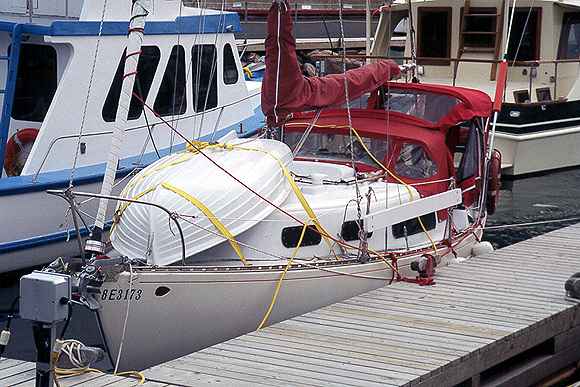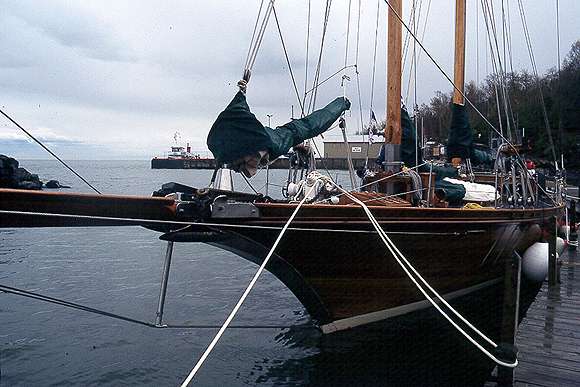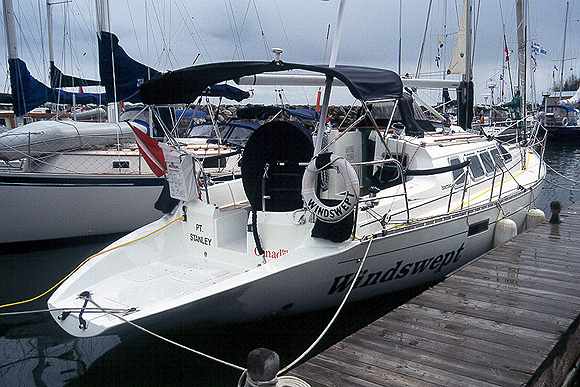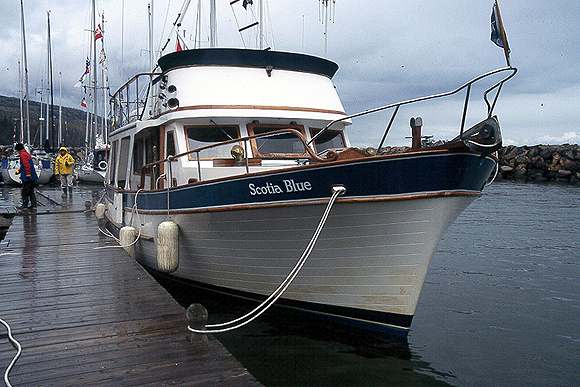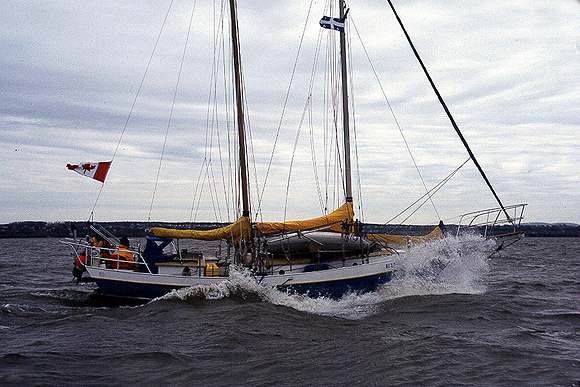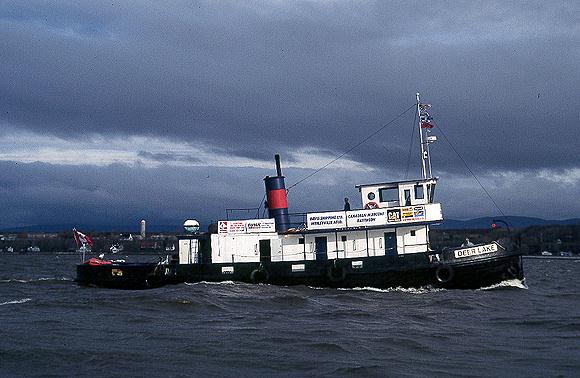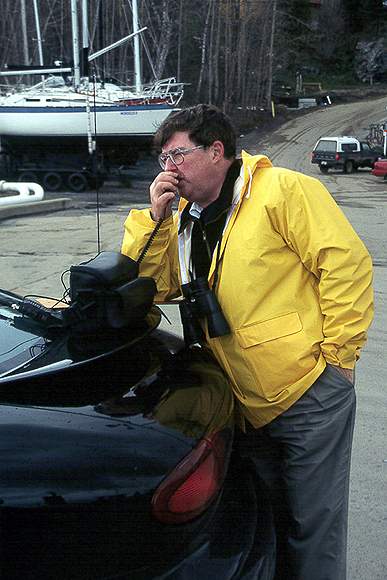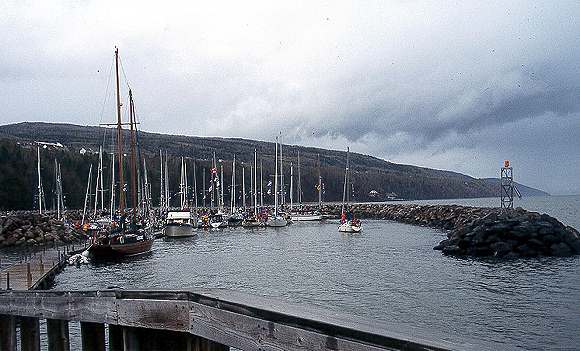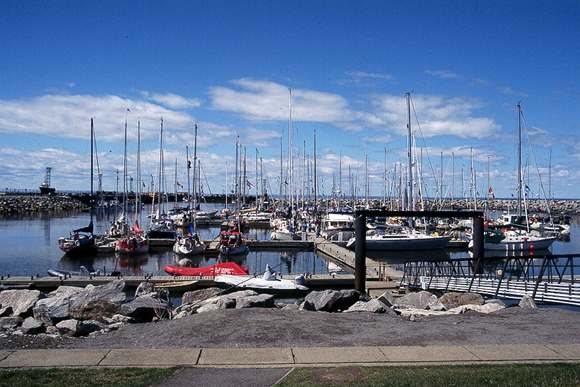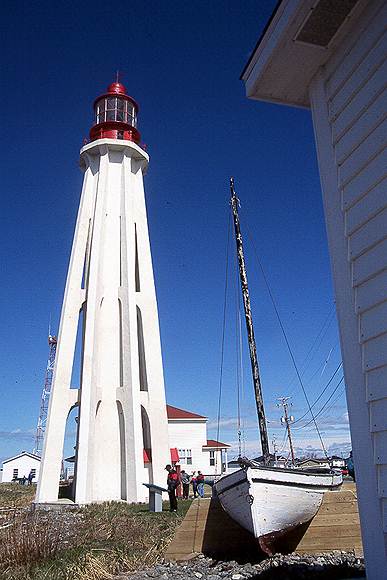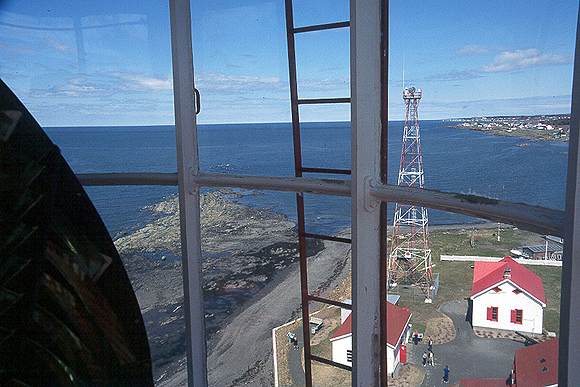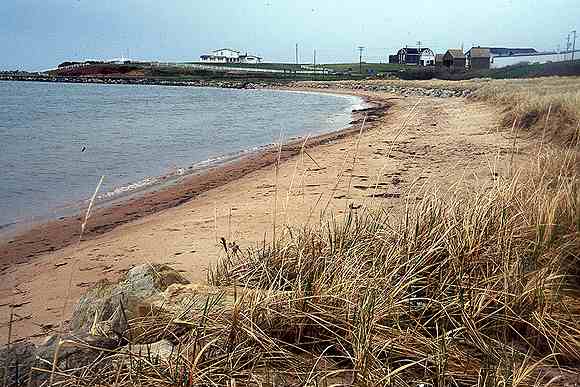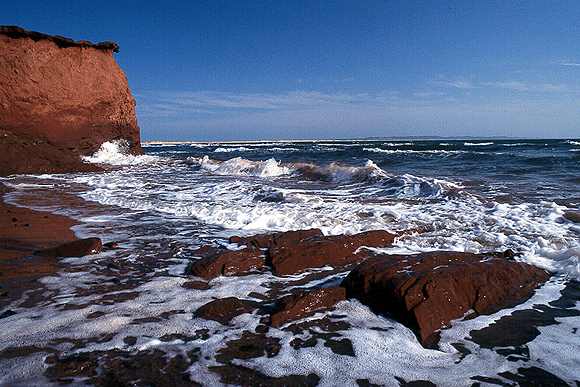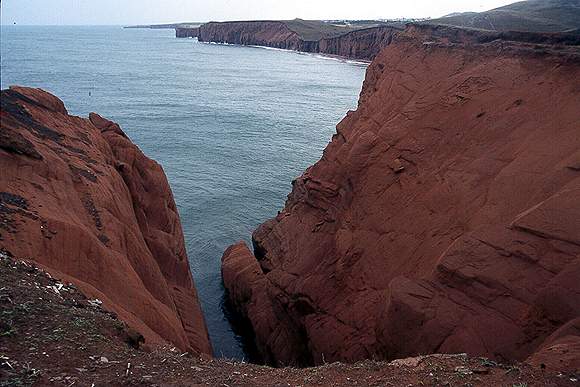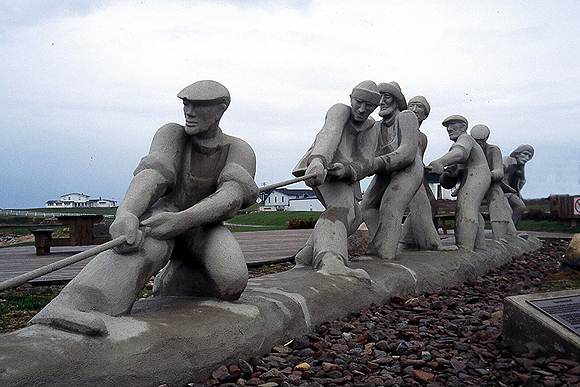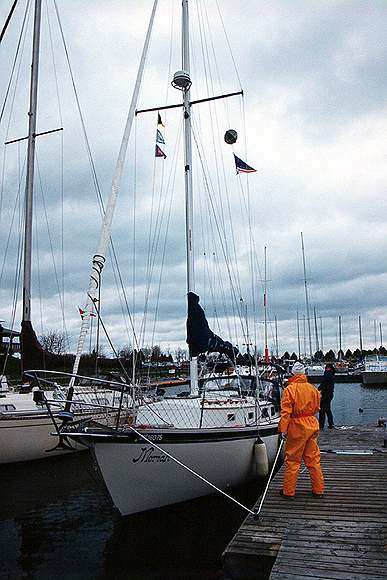
This is our boat "Meriah" leaving the dock at the Mimico Cruising Club in Toronto at the start of the flotilla.
She is an Aloha 32 built in Whitby Ontario to a Mark Ellis design..
The date is 10 May 1997 which is early for sailing on Lake Ontario. Most crews were expecting the cold weather to be the biggest challenge especially down the St Lawrence. As it turned out we summer sailors coped very well with the weather.
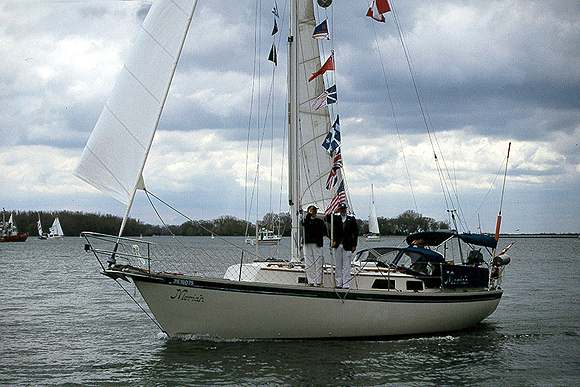
Sail Past in Toronto Harbour to mark the start of the flotilla. We decided to wear whites to mark the occasion..
For you sailors, the genoa is meant to be flapping to salute the dignitaries!
